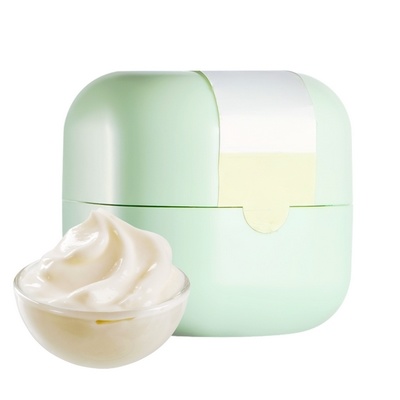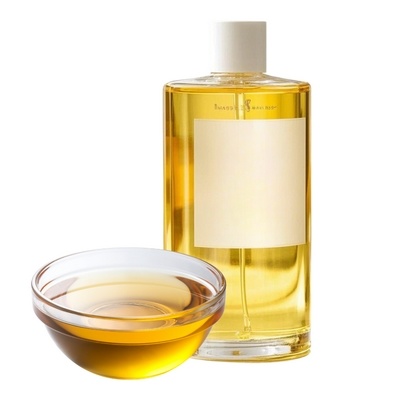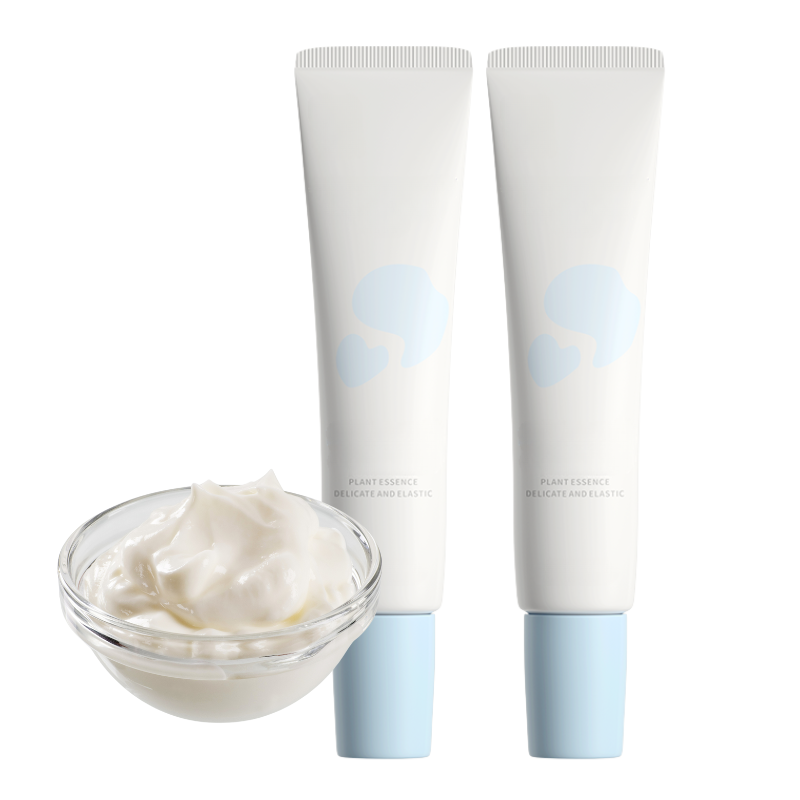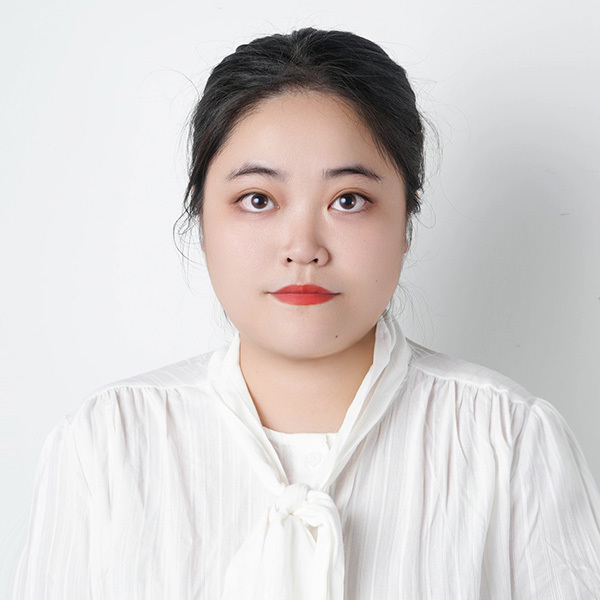Baby Care
From formula to scent, your baby oil &baby cream is customized by you! Choose natural ingredients to create a unique baby skin care experience, so that every moment is filled with peace of mind and warmth.
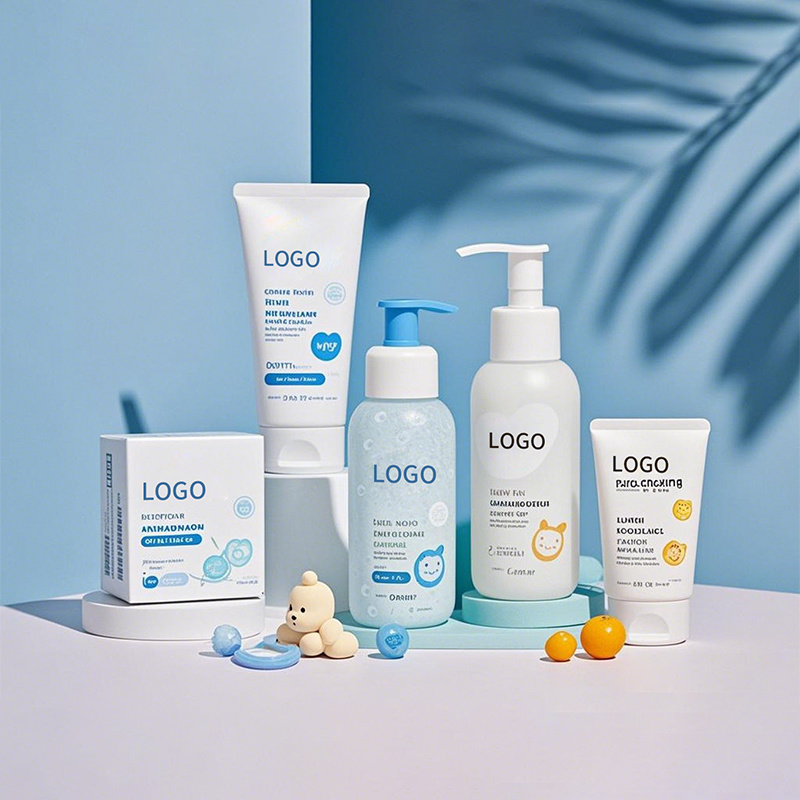
Choose YUNMEI to OEM/ODM Customize Exclusive Health Care for Your Baby
Our OEM/ODM baby cream and baby oil are the exclusive guardians of baby's skin. Customized ingredients and packaging give the most gentle care to baby's delicate skin. 24-hour long-lasting moisturizing, gentle and non-irritating. From formula to efficacy, tailor-made baby's exclusive skin care program. Baby's smile starts with healthy skin. Choose our baby cream, natural nourishment, and repair skin barrier.
Product Type Customer
Number of Customized
Services R&D and Innovation
Serving Brand Clients
Daily Production Capacity
Daily Emulsification Capacity
About Us
For over 21 years, we have excelled in the OEM /ODM cosmetics manufacturing industry. Our Two Guangzhou factories and advanced R&D lab produce over 150 million skincare products annually, serving more than 2500 brand clients worldwide. Our commiment to advanced technology and strict quality control ensures we deliver high-quality, safe, and effective products that value to your brand.

Face Gel
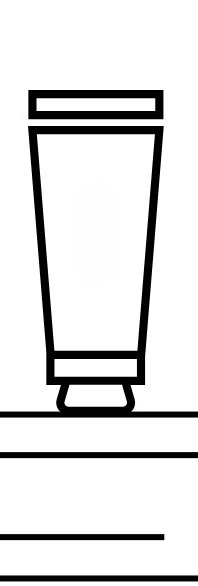
Face Cleanser

Cream

Serum

Lotion

Spray


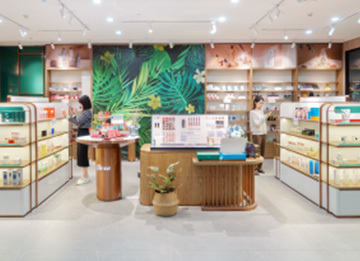

Global Reach and E-Commerce Presence
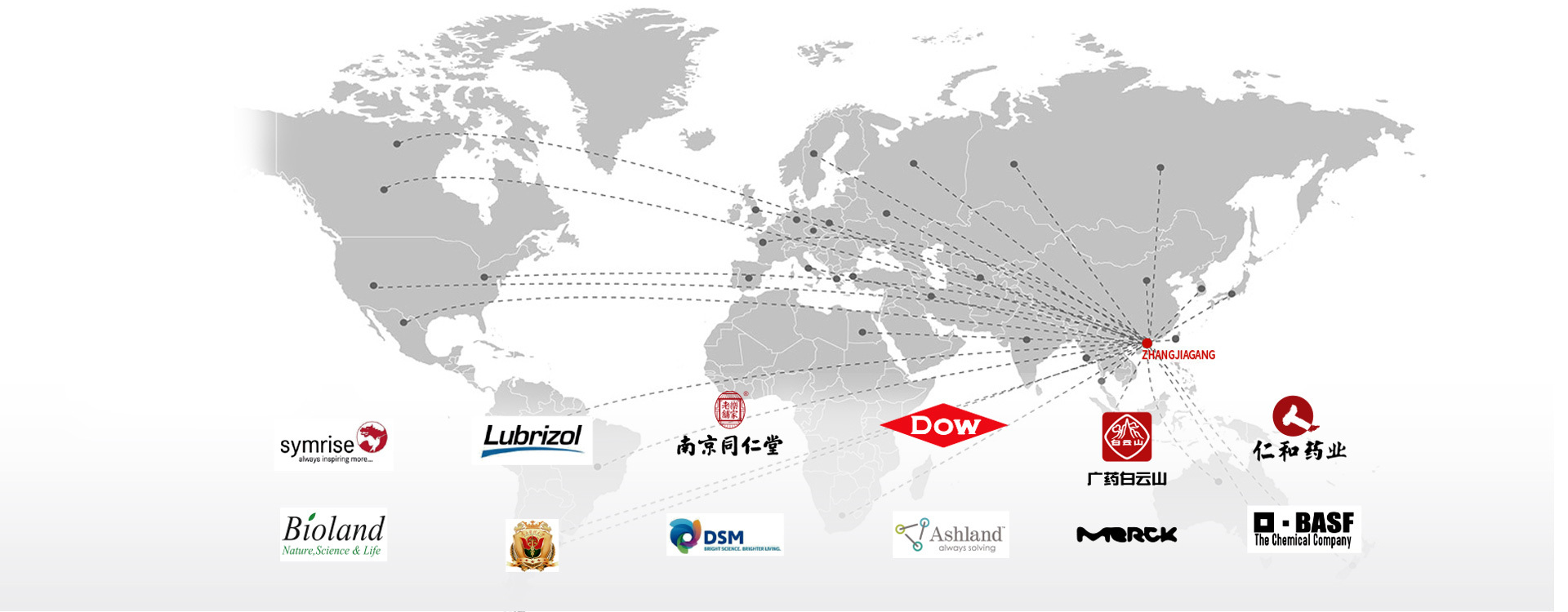
We expand globally through a strong e-commerce presence, leveraging leading platforms and independent websites. With optimized cross-border strategies, efficient logistics, and localized support, we deliver quality products and exceptional service worldwide.
What Our Happy Clients Say

The products from YUNMEI are simply amazing! I’ve been using their skincare line for a few months now, and my skin has never looked better. The formulas are gentle yet effective, and I love the natural ingredients they use.
—James
Baby Care
Requirements for Children's Skin Care Products
How Old Can Babies Use Infant Care Products
Private Customization: Baby care designed for infants and young children
Requirements for Children's Skin Care Products
When it comes to children's cosmetics, what comes to parents' minds first? Is it baby sunscreen? Or is it the makeup used by baby for performances? Faced with a wide range of baby skin care products and overwhelming advertisements, how to choose scientifically?
Definition of Children's Cosmetics
According to Article 3 of the "Regulations on the Supervision and Administration of Children's Cosmetics" implemented on January 1, 2022, "Children's cosmetics refer to cosmetics suitable for children under the age of 12 (including 12 years old) with the functions of cleaning, moisturizing, refreshing, and sun protection." That is to say, children's cosmetics are not limited to the makeup used for "makeup". Shower gel, talcum powder, moisturizer, etc. used by babies are all within the scope of children's cosmetics. The "Regulations on the Supervision and Administration of Children's Cosmetics" also clearly stipulates that children's cosmetics should be designed in accordance with the principle of "safety first, minimal formula, and must have efficacy", and should not claim "deodorization, whitening, freckle removal, acne removal, hair removal, dandruff removal, anti-hair loss, perming, hair dyeing" and other functions.
Principles of choosing children's cosmetics: "Three musts"
"Three musts"
1. Choose children's cosmetics by age group: only children over 3 years old can use them. Children's cosmetics should be selected. Adult cosmetics may contain ingredients such as salicylic acid and its salts that are not recommended for children, so they cannot be replaced by adult cosmetics. Sunscreen products: For newborns, there is less demand for outdoor activities. Babies under 6 months old have delicate skin and a higher ratio of body surface area to body weight. It is more likely to have adverse reactions when applying sunscreen products. Therefore, it is not advisable to use sunscreen products. Going out during the direct sunlight period (10 am to 2 pm every day) should be avoided. If you need to go out, try to protect yourself from the sun by wearing a hat, holding an umbrella, wearing light-colored pure cotton clothes and other physical covering methods. For infants and young children aged 6 months to 2 years old, clothing covering is still the main method for sun protection. You can also use physical sunscreen products within SPF10/PA+, preferably cream products.
2. Products with children's qualified labels. Cosmetics with words such as "for the whole family, for all ages" printed on their labels shall be managed as best baby skin care products, so they should also have the "for children" logo. Different countries have different standards.
3. Choose baby's cosmetics with extremely simple formulas. Products with relatively simple formulas and no hormones or alcohol should be selected. If the essences and aromatic plant oils used in baby skin care set contain fragrance components that may be allergenic published by domestic and foreign authoritative organizations, in principle, the content of the fragrance components that may be allergenic in the product should be calculated. If it is >0.001% in leave-on products and >0.01% in rinse-off products, it should be marked on the product label.
Notes
1. Cosmetics can also be "skin tested". When a child uses a certain children's cosmetic for the first time, it is recommended to apply a small amount behind the ear or the back of the hand to do a "skin test". After observing for 15 minutes, if there is no redness or rash, it can continue to be used.
2. "Buy old, not new" Buy products from professional and regular children's cosmetics manufacturers, and at the same time, try to buy mature products from old brands. Because "old" products have a wide range of circulation in the market, a long circulation time, and their safety has been verified for a long time, they are more guaranteed.
3. "Buy small, not big" It is best to buy small-packaged products, because infants and young children use less each time, and small packages can ensure that the baby can use them up in a relatively short time to avoid the growth of microorganisms. Finally, if the baby has a large area of allergies, redness and persistent non-subsidence, please seek medical treatment in time.
Export Requirements for Baby Skin Care Products in Different Countries
Baby care skin care products exported to different countries need to comply with the regulations and standards of the target market, mainly including safety, ingredients, labeling, certification and packaging requirements. The following is an overview of the requirements of major countries and regions:
1. China
Regulations: "Regulations on the Supervision and Administration of Cosmetics" (implemented in 2021).
Record/Registration: Children's skin care products (0-3 years old) must be registered, and those over 3 years old must be registered.
Ingredient restrictions: High-risk ingredients such as hormones and antibiotics are prohibited, and fragrances and colorants must comply with the "Technical Guidelines for Children's Cosmetics".
Label: Mark the "Children's Cosmetics" logo (small golden shield), and all ingredients are marked.
Testing: Toxicology testing and human safety assessment must be passed.
2. United States
Regulations: FDA supervision, in accordance with the Federal Food, Drug and Cosmetic Act (FD&C Act).
Ingredient safety: Ingredients must be approved by the FDA (such as CIR evaluation), and mercury, chloroform, etc. are prohibited.
Label: All ingredients are marked (INCI name), "children's use", warning statements (such as "avoid eyes").
Voluntary certification: You can apply for EWG Verified or Pediatrician Recommended logo to enhance trust.
3. European Union
Regulations: EU Cosmetics Regulation (EC No 1223/2009).
Safety assessment: A Cosmetic Safety Report (CPSR) must be submitted, and CMR substances (carcinogenic, mutagenic, reproductive toxicity) are prohibited.
Ingredient restrictions: Strictly restrict fragrance allergens (such as limonene, linalool).
Label: Ingredients are arranged in descending order by content, and the use-after-opening period (PAO) is marked.
CPNP notification: Products must be registered on the EU Cosmetics Notification Portal.
4. Japan
Regulations: Japan Pharmaceutical Affairs Law (PMDA supervision).
Ingredient approval: New ingredients require prior approval, and hydroquinone, phenol, etc. are prohibited.
Label: Japanese labeling, including instructions for use, precautions and full ingredients.
Testing: Skin irritation test data must be submitted.
5. South Korea
Regulations: Korean Cosmetics Act (MFDS supervision).
Safety testing: Children's products must additionally submit skin irritation and allergy tests.
Ingredients: Follow the Korean Cosmetic Ingredient Standard (KCIS).
Label: Korean labeling, including production date and shelf life.
6. Southeast Asia (such as Singapore, Malaysia)**
ASEAN standards: Most countries follow the ASEAN Cosmetics Directive (ACD).
Ingredients and labeling: Similar to the EU, local language labels are required.
Registration: Some countries require filing (such as Singapore HSA, Malaysia NPRA).
7. Middle East (such as Saudi Arabia, UAE)
Regulations: GSO standards (Gulf Cooperation Council).
Halal certification: It is recommended to obtain a halal certificate (such as raw materials do not contain alcohol/animal ingredients).
Label: Arabic + English bilingual, marked with production date and batch number.
SASO certification: Saudi Arabia must comply with SASO standards.
8. Australia
Regulations: TGA supervision, follow the "Cosmetic Standard 2007".
Safety assessment: A Cosmetic Safety Report (CPSR) must be submitted, and CMR substances (carcinogenic, mutagenic, and reproductive toxicity) are prohibited.
Ingredient restrictions: Strict restrictions on fragrance allergens (such as limonene and linalool).
Label: English labeling, including ingredients, warnings and Australian information.
How Old Can Babies Use Infant Care Products
For adults, using hair shampoo and body wash when bathing is almost essential. So for baby, especially newborn baby, do they also need to use hair shampoo and body shower gel when bathing? In other words, when can babies use baby shower gel and shampoo regularly? Yunmei will share with parents the relevant knowledge of using shampoo and shower gel for baby bathing.
Do Newborn Babies Need to Use Shower Gel for Bathing?
Some parents may be influenced by TV commercials, magazines or childhood memories, and think that soap and shower gel must be used when bathing baby, but this is not the case. Generally speaking, babies aged 0 to 1 have a very thin stratum corneum and their sebaceous glands are not yet fully developed. Daily bathing can be washed with clean water.
Many newborn babies have vernix caseosa on their skin, which usually falls off by itself after a full month, and parents do not need to use shower gel to wash it off for their babies. Some parents may worry whether clean water can clean their baby's skin? In fact, most babies do not exercise much in the first few months after birth. The dirt they can touch is nothing more than diapers or spitted milk and food, so ordinary water can completely deal with these problems.
In addition, according to the recommendation of the American Academy of Pediatrics (AAP), it is best not to bathe a baby more than three times a week in the first year after birth. Frequent bathing will make the baby's skin dry, especially in winter.
Why is it not Recommended to Use Shower Gel, Soap and Other Products for Babies too Early?
Some parents may feel that using baby shower gel and soap seems to have no harm, and it can also make the baby smell good . However, parents need to pay attention to the fact that the skin of newborn babies is relatively delicate. No matter how mild the ingredients of shower gel or soap are, they are essentially chemical products and may cause certain irritation to the baby's skin.
Especially for some babies with eczema or other skin problems, the irritation of the skin caused by the use of shower gel should be reduced. If it can be washed clean with water, there is really no need to use shower gel.
Baby shampoo is the same as shower gel. The hair of baby born a few months ago is usually very soft, and the scalp is protected by natural oils. They do not need to use hair shampoo specially. Using shampoo on babies too early will destroy the natural oils on the baby's scalp.
When Should Baby Start Using Shower Gel or Shampoo?
It is not recommended to use shower gel or shampoo on babies too early, which does not mean that babies under 1 year old cannot use any shower gel or shampoo at all. If the weather is hot and the baby sweats a lot, parents can use some mild baby shower gel for the baby in moderation. When the baby's activity level starts to increase after he turns 1 year old, parents can start using shower gel and shampoo for the baby regularly, but be sure not to over-clean.
Some parents may ask when can babies take bubble baths? Most doctors recommend that it is best to avoid bubble baths before the baby is 3 years old, because soaking the baby in a bathtub full of bubbles for a long time may irritate the baby's urethra (especially uncircumcised boys), leading to urinary tract infection (UTI).
How to Choose Baby Products
When choosing baby-specific bath and shampoo products, parents should also choose products with milder ingredients. If the baby has sensitive skin, you should also avoid using products containing fragrances. Unscented washing and care products are a better choice for babies with sensitive skin.
1. Glycerin
Function: Natural moisturizer, helps lock in moisture and keeps the skin moisturized.
Features: Gentle and non-irritating, suitable for all skin types, especially sensitive skin.
2. Aloe extract
Function: It has calming, soothing and anti-inflammatory effects, helping to eliminate skin irritation.
Features: Natural repair ingredients, suitable for sensitive and damaged skin.
3. Sweet almond oil
Function: Nourishes and moisturizes, softens the skin, and relieves dryness.
Features: Light and non-greasy, rich in vitamin E, gentle and safe.
4. Jojoba oil
Function: Mimics sebum, effectively nourishes and regulates oil balance.
Features: High stability, gentle and moisturizing, suitable for baby's sensitive skin.
5. Oatmeal extract
Function: Anti-inflammatory, soothing, relieving redness and dryness.
Features: Natural fiber and phenolic ingredients, strengthening skin barrier.
6. Coconut oil
Function: Nourishing and moisturizing, antibacterial and anti-inflammatory, helping to relieve eczema.
Features: Light texture, easy to absorb, gentle and safe.
7. Calendula extract
Function: Anti-inflammatory, promotes wound healing, reduces redness and swelling.
Features: Natural antibacterial ingredients, suitable for sensitive and irritated skin.
8. Honey
Function: Natural antibacterial, emollient, helps repair skin.
Features: Gentle and safe, but make sure it is natural and used in moderation.
9. Ginkgo extract
Function: Anti-oxidant, protects skin from environmental damage.
Features: Gentle and repairing.
10. Olive oil
Function: Deeply nourishing, replenishing fatty acids needed by the skin.
Features: Rich in antioxidants, gentle and reliable.
These ingredients are very natural and gentle, suitable for the sensitive skin of babies and young children. When formulating skin care products, these ingredients are usually selected as the basis to ensure that the baby's skin is taken care of most gently. If you need other customized ingredients, please feel free to contact us Yunmei Cosmetics.
Private Customization: Baby care designed for infants and young children
Private customization: personalized skin care brands designed for infants and young children.As parents pay more attention to the health and safety of their babies, private customized infant and baby skin care products brands are gradually emerging. They use sophisticated personalized solutions to tailor diversified, safe and best natural baby skin care products to protect every inch of delicate skin.
The Necessity of Customized Young Children Baby Products Skin Care
Every baby's skin is naturally sensitive and changeable, and ordinary skin care products are difficult to meet personalized needs. Customized brands use scientific testing and high-end raw materials to provide safer and more effective care solutions, so that babies can get the most intimate care during their growth.
Categories of Infant and Young Children Skin Care Products Provided By Customized Brands
1. Bath products series
Baby hair shampoo and bath two-in-one: gentle and natural formula, suitable for baby's sensitive scalp, cleans and protects hair and skin at the same time.
Baby shower gel: add natural plant extracts to create a warm bubble experience, and the skin will be delicate and soft after washing without irritation.
2. Skin care lotion and baby cream
Baby lotion: customized according to the degree of skin dryness, moisturizing and maintaining the skin barrier.
Delicate Touch Cream: Contains nourishing oils to help baby skin maintain softness and elasticity, suitable for daily moisturizing care.
Sensitive Skin Special Repair Cream: Suitable for babies with eczema or sensitive skin, repairs damaged skin and relieves discomfort.
3. Lip Balm and Bady Oil
Natural Lip Balm: Provides gentle nourishment for baby's chapped lips, without added fragrance.
Nourishing Baby Body Oil: Made with plant oil, suitable for massage, promotes blood circulation, and strengthens the skin barrier.
4. Eye Care and Facial Cleansing
Gentle Eye Cleanser: Designed for young children, gently cleans eye residue.
Facial Cleanser: Customized according to skin type, gently removes dirt and keeps fresh.
Future Trend: Technology Empowers Personalized Care
With the help of AI, data analysis and intelligent monitoring technology, customized infant skin care for face and body will be more intelligent and refined in the future. Real-time monitoring of skin condition and automatic adjustment of formula ensure that every baby can enjoy the most suitable care.
Personalized best baby skin care products are not only about skin quality, but also represent the love and responsibility of parents for their babies. Choose personalized, natural and organic baby skin care products to let your baby grow up healthy, happy and worry-free in the care of love.
Considering a private label Skin care brand?
Get started with these 10 must-ask OEM/ODM questions every entrepreneur needs to know.
Are there factories and laboratories that can be visited?
Of course, we support factory inspections.
Do you support exclusive formulation research and development with confidentiality agreements?
Yes, we have a professional R&D team and abide by business secrets.
How to evaluate the R&D strength of OEMs?
Check whether the laboratory configuration has an independent laboratory (not outsourced) and equipment list.
How can OEM help brands with marketing?
Provide finished product shooting material packages and jointly develop clinical test reports.
How long does it take to develop and produce a custom skincare product?
ODM: 4–8 weeks (using existing formulas).
OEM: 3–6 months (includes R&D, testing, and production).
Factors affecting timeline: Ingredient sourcing, stability testing, and packaging lead time.
How do ensure product safety and quality?
Stability & compatibility test reports (3–6 months). Patch test results (for sensitive skin claims). GMP, ISO 22716, or FDA-certified facilities.
Can customize the packaging with my brand logo?
Yes! Most manufacturers offer: Label printing (matte/glossy, embossing) ,Custom bottle shapes, Eco-friendly options (PCR plastic, glass, biodegradable tubes) .
Can request samples before bulk production?
Yes, always request samples!
What is the minimum order quantity (MOQ) for private label skincare?
Typically 1,000–5,000 units per product, but some manufacturers offer lower MOQs (e.g., 500 units) for startups.
What is the specific OEM cooperation model?
Under the OEM model, the brand provides product formula, production process and packaging design requirements, and the OEM factory produces according to these requirements.











